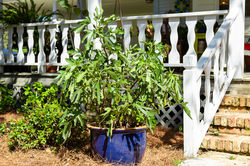 Again and again dwarf figs or (very) compact growing figs appear on the market, some of which are said to remain below one metre in height. It is striking that for promotion and as an illustration, drawings with an infinite number of fruits on as many short shoots as possible are often shown and that in photographic material and in videos, figs are actually always shown in pots or containers. In this article we will look into the question of whether and how compact growing fig trees or fig bushes can exist at all. We will also introduce and discuss a few compact growing fig varieties. Finally, we will show the most important factors and 'laws of growth' that lead to compact fig growth in the garden, in the undisturbed ground or even in pots. However, the most important conclusion of this article should be stated right at the beginning: really super compact, naturally dwarf fig varieties with a growth of less than 1 m (which is our definition of Lowberries® and Lowfruits®) do not really exist. And the most important and influential factor for a compact fig (and at best for a dwarf fig) is pot cultivation, i.e. limiting root growth and at best also malnutrition with water and nutrients. The fig is extremely stress-tolerant (to heat, drought, nutrient deficiency and even salinisation) and can survive in very confined and poor conditions – or respond with dwarfing.
Again and again dwarf figs or (very) compact growing figs appear on the market, some of which are said to remain below one metre in height. It is striking that for promotion and as an illustration, drawings with an infinite number of fruits on as many short shoots as possible are often shown and that in photographic material and in videos, figs are actually always shown in pots or containers. In this article we will look into the question of whether and how compact growing fig trees or fig bushes can exist at all. We will also introduce and discuss a few compact growing fig varieties. Finally, we will show the most important factors and 'laws of growth' that lead to compact fig growth in the garden, in the undisturbed ground or even in pots. However, the most important conclusion of this article should be stated right at the beginning: really super compact, naturally dwarf fig varieties with a growth of less than 1 m (which is our definition of Lowberries® and Lowfruits®) do not really exist. And the most important and influential factor for a compact fig (and at best for a dwarf fig) is pot cultivation, i.e. limiting root growth and at best also malnutrition with water and nutrients. The fig is extremely stress-tolerant (to heat, drought, nutrient deficiency and even salinisation) and can survive in very confined and poor conditions – or respond with dwarfing.
Some theoretical considerations on dwarf figs
Before we turn to some more compact growing varieties, I will allow myself a few theoretical considerations to show that true, genetically predisposed dwarfism in figs is rather rare or even unlikely. Due to their evolutionary history, figs have an immense will to survive, growing even out of a crack in the rock or in stony soil that offers hardly any nutrients and water – and conversely, they take every opportunity that presents itself to grow stronger depending on the situation and thus ensure their survival.
Positive correlation between growth and yield
In contrast to many types of fruit, there is a fundamentally positive correlation between the growth and yield in figs.
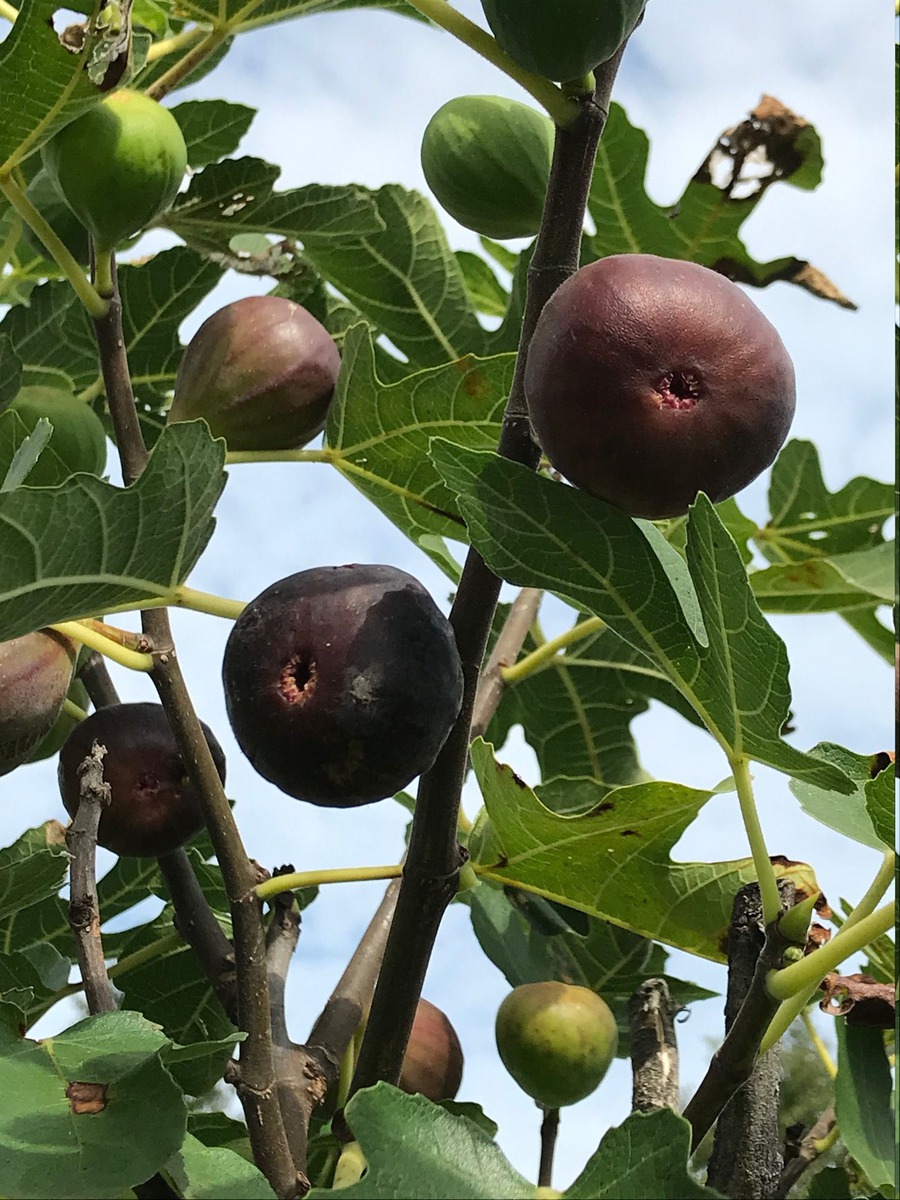
Picture: A fig tree with many fruits.
This positive correlation (which has also been scientifically proven, e.g. by Badii Gaaliche et al., 2011, in Scientia Horticulturae) concerns both types of figs that are possible here in the north: the stronger the previous year's shoots grow, the stronger the yield of summer figs that set on the previous year's branch in autumn/winter, usually towards the top. And the stronger this year's shoots grow, the more autumn figs can develop, i.e. fig fruits that set during the growing season and ripen in autumn, mostly in September to November in our region.
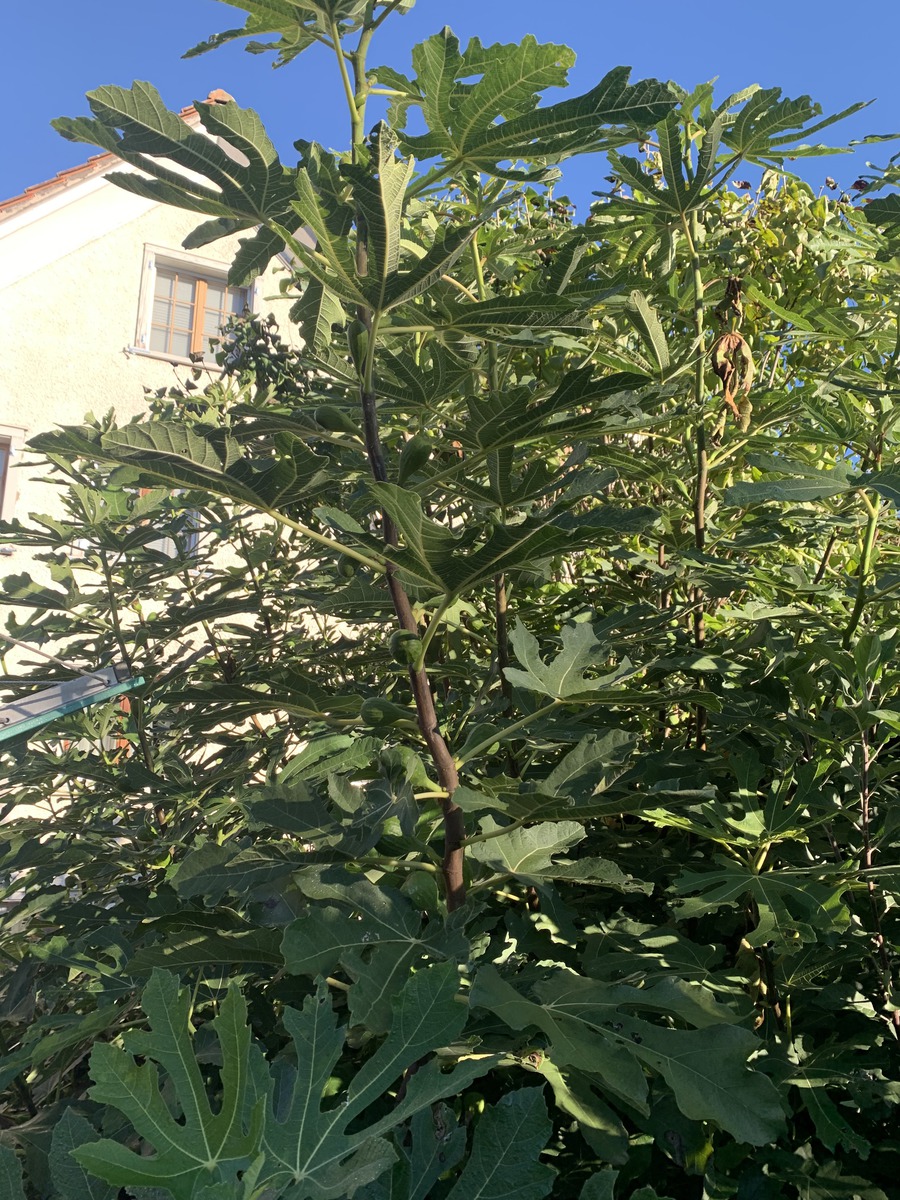
Picture: An autumn fig shoot: the stronger it grows, the more fruit it sets.
Of course, these 'laws of growth' have different effects, depending on whether a variety tends to produce summer figs or autumn figs or, as in the case of Twotimer® figs, whether both yields are more or less equal. Only secondarily, as a corrective mechanism so to speak, does yield then also slow down growth somewhat in the longer term. Nevertheless, the basic law of fig trees remains in force: more growth leads to a greater yield potential. If we now apply this insight to the development of fruiting and cultivated figs over thousands of years, this clearly leads to a preference for varieties that grow strongly under ideal conditions, which can simply produce more fruits, seeds and thus survival potential. Human selection of cultivars, which began several thousand years ago, will also have tended to favour strong growth.
Are there even genes for dwarfing growth in figs?
Here I briefly refer to our breeding experience with compact-growing Lowberries® and Lowfruits®. Over the last 15 years, we have repeatedly bred new varieties that are especially suitable for balconies and terraces as well as small gardens and that show a natural growth of less than one metre. Almost all of these varieties (Lowberry® raspberries, Lowberry® blackberries but also the Maloni® apple trees are based on so-called “genetic dwarfs”).
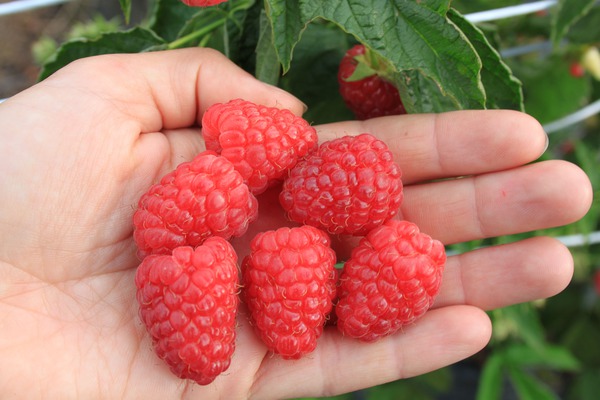
Picture: Lowberry® ‘Little Sweet Sister‘
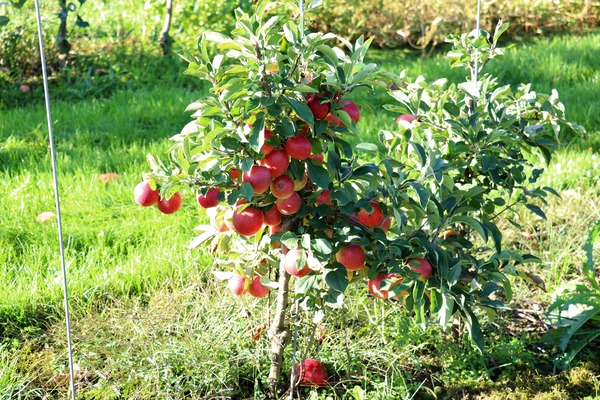
Picture: Lowfruit® Maloni ‘Gullivers’
One can imagine and explain this as follows: genes that cause dwarfism tend to have a negative effect in nature, and are unlikely to survive. Small plants do not penetrate to the light; they are trampled down, eaten and have a severely limited assertiveness. This leads to these genes also being called “lethal”. In nature and in the genetics of plants, these genes or these random gene combinations usually disappear again quickly because their carrier plants are hardly superior. If the genes are dominant, they disappear completely. If they are recessive (i.e. they only have an effect if they are represented on all chromosome strands), they may survive hidden (recessive, only on one chromosome strand) in plants – precisely because they do not have an effect on growth. They only appear if by chance two plants combine sexually that carry the same dwarf gene (rather unlikely), or if the plant becomes self-fertile mostly through human selection, i.e. can fertilise itself with its own pollen. Accordingly, almost all our Lowberries® and Lowfruits® are the result of such selections.
But what does what has been said mean for the fig? Due to its complex fertilisation biology, self-fertilisation is largely excluded in the cultivated fig: no fully formed male flowers develop in the small fruits of cultivated figs; cultivated figs are dependent on fertilisation by so-called caprifigs (with the help of a fertilising wasp). So, by definition, self-fertilisation never occurs. And what about the northern fruit figs, which are often advertised as being self-fertile? The only correct thing about this description is that the fruits of the northern fig varieties are not produced by cross-fertilisation; they are not produced by self-fertilisation either, but they have developed the ability (due to human and probably animal selection) to set figs and bring them to maturity even without fertilisation. Our northern fig varieties do not produce germinable seeds.
But what does all this have to do with compact growth? It would be possible, and probably probable, that from time to time, through natural mutation (a decisive driver of diversity), dwarfing genes also arise and at best survive recessively (only on one chromosome strand). But due to the described special fertilisation biology of figs, they cannot duplicate and become visible through self-fertilisation, not even through special breeding methods. It always needs cross-fertilisation to produce germinable seeds. Theoretically, however, it would be possible for recessive dwarf genes of a pollinator fig (caprifig) and a fruiting fig to be combined, but this is extremely unlikely...
Conclusion: the fig has systematically developed into a species that tends to grow strongly and the emergence of “genetic dwarfs” is extremely unlikely.
Compact growing figs in the Lubera range and on the market
Accordingly, the range of distinctly compact-growing varieties is very limited – and usually the compact growth is exaggerated. If a fig tree in a pot fruits quickly, already at a height of 50-80 cm, this does not mean that it will keep this size. When planted outdoors it will easily reach two metres plus; most varieties will quickly grow to 3-4 m (after 7-10 years) without heavy pruning and frost events. So basically, rather caution is advised when dwarf figs are offered with a size below 100 cm or even well below 150 cm. We at Lubera have not yet found such a variety in our range of well over 100 test varieties. As we have shown above in the last section, this is also in line with our theoretical expectations. In the following, we will look at three of the best known and also best varieties of compact figs.
Fig tree Gustis® Ficcolino®
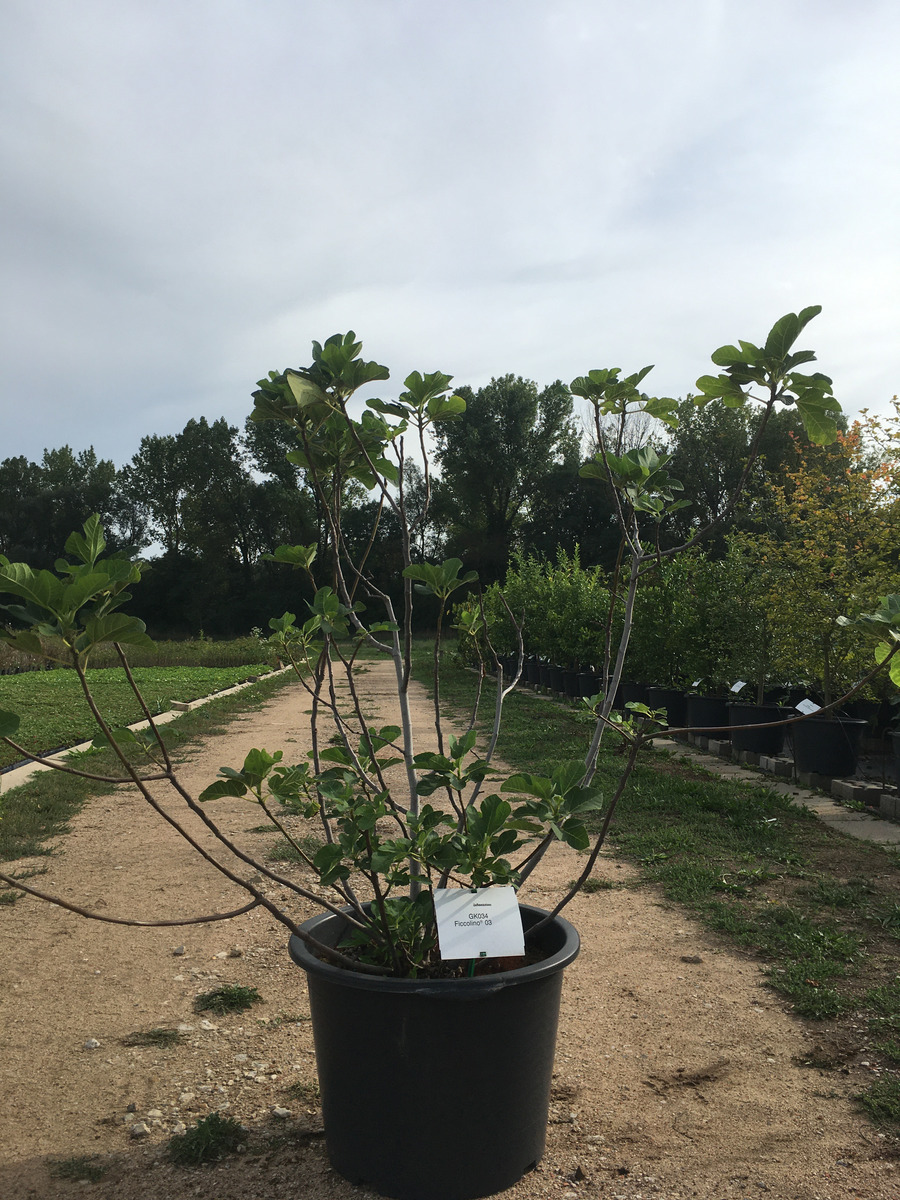
Picture: The variety Gustis® Ficcolino® in its mother plant quarters.
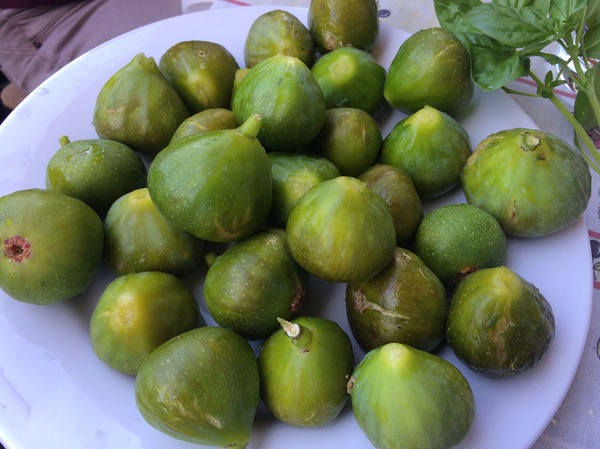
Pictures: The fruits of the fig tree Gustis® Ficcolino®.
The fig tree Gustis® Ficcolino® is the only compact variety that has also been selected for its compact growth in the open field, in undisturbed ground. In our container nursery, Ficcolino® does not grow compact at all, but is very vigorous, particularly bushy growing and it easily reaches a height of 60 to 90 cm in a 5 L pot. Even if you measure the internodes, i.e. the distance between the nodes (the leaf buds), there is hardly any difference to other varieties that grow more strongly in the long term, but usually also more sparsely. The decisive difference can be seen in the growth habit: Ficcolino® grows much bushier, with more shoots than other varieties and it also branches much more strongly in the following years than its fig competitors. These resulting many shoot tips then set tiny fruit buds in late autumn and winter, which develop into juicy, green-yellow-white, small figs in the following year until July. In the summer, more autumn figs are added – and the combination of the branched growth, the large summer yield and the autumn yield mean that the Ficcolino® fig tree grows much more compactly and remains at +-200 cm even after 7-10 years. Ficcolino® is therefore a quite compact growing fig variety that remains at about half the height of strong growing fig varieties. However, one cannot speak of a dwarf fig. In direct comparison, Ficcolino® seems to grow similar to Little Miss Figgy® – maybe even a little weaker.
Fig, dwarf fig (?) Little Miss Figgy®
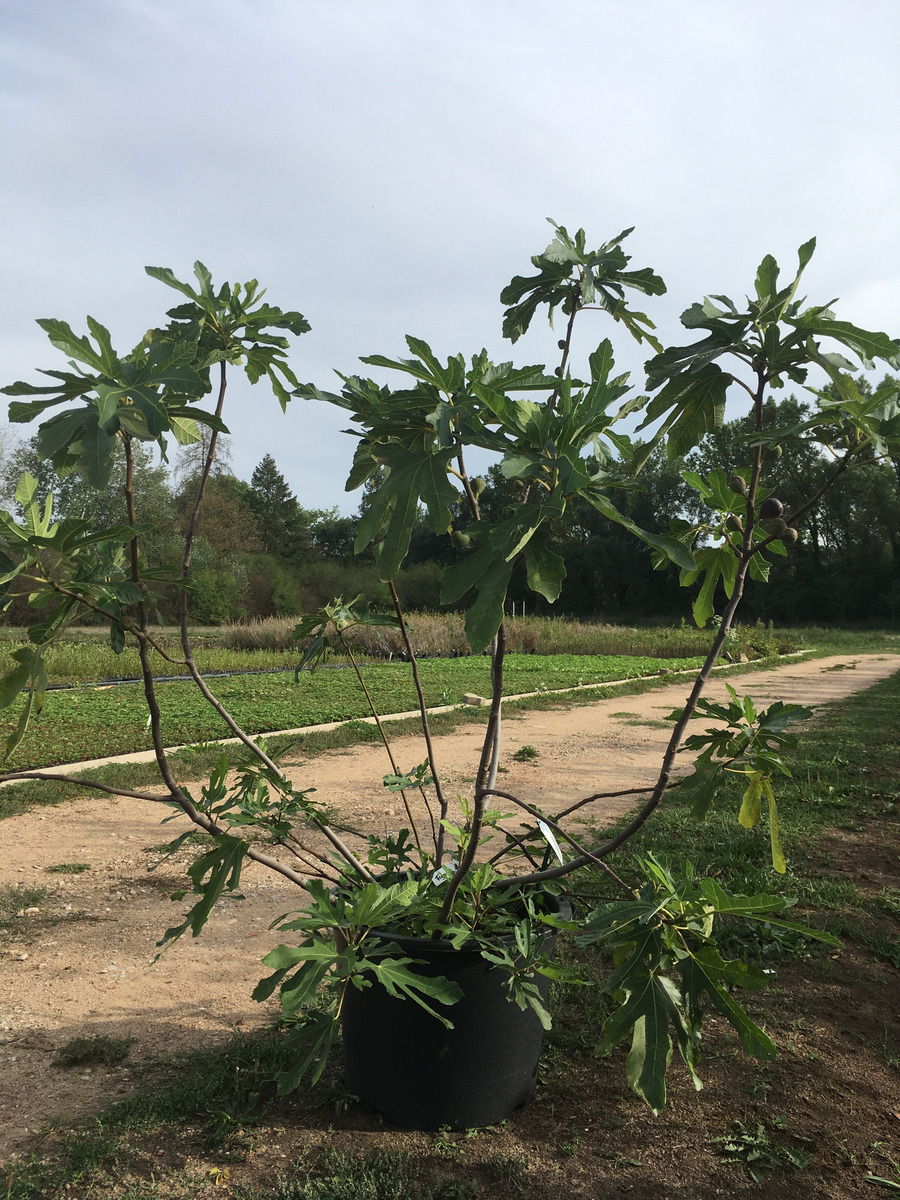
Pictures: The fig variety Little Miss Figgy® in its mother plant quarters.
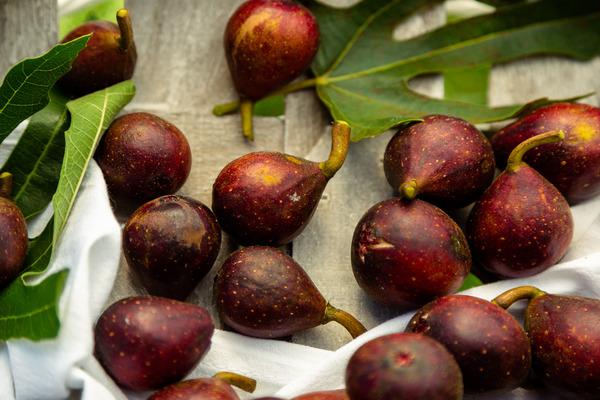
Pictures: Little Miss Figgy®
Little Miss Figgy®, sometimes sold under the brand name Figality®, is listed in many catalogues as a dwarf fig, which is also not really accurate. It is said to be a bud mutation of Violet de Bordeaux, which develops significantly shorter internodes than the original variety. Also with Little Miss Figgy® we notice in the nursery in the second year in a 5 L pot a very bushy, multi-shoot growth, which however also like with Ficcolino® easily reaches 60-100 cm. Also here the 'compact effect' is not really based on the compact growth – and also the internodes are with good watering and fertilisation only insignificantly shorter than with other, normally growing varieties. But like Ficcolino®, the bushy growth, the good branching and then the combination of a double crop (summer figs and autumn figs) lead to weaker growth overall. I would also put this at +-200 cm (although we do not yet have any 10-year-old plants). This can also be seen in various catalogue data: in the United States, the final height of this young variety was initially given as 3-4 feet, but this is now gradually changing to 4-6 feet, which would bring us up to 180 cm 😉.
Fig tree Petite Negra, Petit Negro
Unfortunately, we do not carry the Petite Negra or Petit Negro fig tree in our current range and do not have any experience of our own. Interestingly, however, it is also a bud mutation of Violet de Bordeaux and it cannot be excluded that it is one and the same variety as Little Miss Figgy; in any case they are very similar. But we assume that they were two independent bud mutations of Violet de Bordeaux, which obviously tends to such mutations and grows relatively compact itself. On the internet and in the literature you can only find information and pictures of Petite Negra for pot and container plants, which of course falsifies the result due to the prison effect (limited root space, sometimes water and fertiliser scarcity). But here, too, the compact growth will have to be attributed to the general variety characteristics: bushy, well-branched growth and the combination yield of summer figs and autumn figs. The size specifications also go up to just under 200 cm.
What can lead to compact growth in fig trees?
Even though the search for dwarf figs has not really been successful so far (if we assume a growth limit of 100 cm for this) there are five clear factors and partly also cultivation methods that lead to a more compact growth of figs. The most compact growing varieties are those that combine several of these characteristics, as we have shown above with the varieties Ficcolino® and Little Miss Figgy®. These factors include the following:
- Shorter internodes
- Bushy growth, strong branching for figs
- Twotimer® fig characteristics with two yields in the same year
- Figs in a pot
- Hard pruning of autumn fig varieties
Bud mutation with shorter nodal spacing
As already shown above with Petite Negra and Little Miss Figgy®, shorter internodes can of course have a growth retarding effect. But I would estimate it to be rather low. The short internode distance is often confused with the unique characteristic of the cultivated fig Ficus carica to respond to deficiencies (water, root space, fertiliser) with dwarfism and very short internodes. Anyone can easily observe this with potted figs that have been in the same pot for several years and perhaps fertilised somewhat sub-optimally. In the end, however, this effect almost always becomes apparent after 2-3 years in a container or pot.
Bushy growth, strong branching

Picture: Little Miss Figgy® plants in the field in Bad Zwischenahn, Germany.
This characteristic is ultimately much more important for compact growth. The entire growth vigour is distributed among different shoots and then the branching. More shoot tips develop, on which the small flower buds for the next year's summer figs form in late autumn towards the end of the growing season. These will then in turn slow down vegetative growth somewhat the following year.
Twotimer figs with summer figs (Breba figs) and autumn figs
It is best to think of it in physical terms. A good Twotimer® fig with a reasonably evenly distributed yield of summer figs and autumn figs has to feed the fruit not only in the first half of the year, but also in the autumn in the second half, which certainly reduces vegetative growth. The prerequisite for this combined effect to occur is certainly that the varieties are those that produce a clear and high summer yield with summer figs; their effect on overall growth seems to be somewhat greater than the effect of autumn figs. And, of course, the horticultural truism remains valid: varieties that are not high-yielding overall will tend to be more vigilant and hardly form a compact habit; varieties that are extremely high-yielding are more likely to have a reduction in vegetative growth.
Growing in pots – the stress effect on fig trees
The fruit fig is an extremely climate resilient and also environmentally resilient plant. It can withstand heat, drought, limited root space and also water scarcity and nutrient deficiency – and reacts to this with a greatly reduced growth, which is essentially based on extremely reduced, short internodes. This is probably also an important reason why the advertised dwarf figs are usually photographed or shown in drawings in the offers and on the internet. Almost all figs grow much more compact immediately...
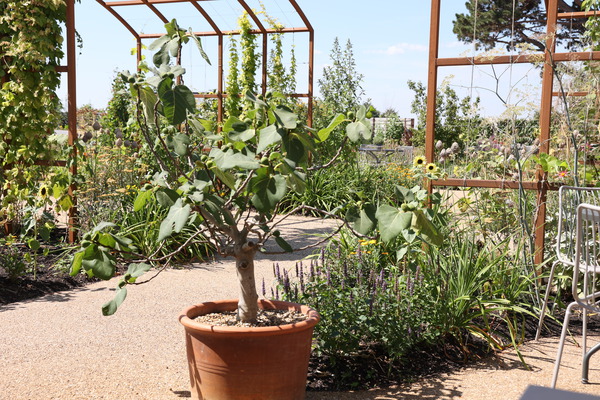
Picture: A fig tree in a pot; photographed in the Wisley Garden of the RHS (Royal Horticultural Society). A compact fig tree in a pot, clearly visible is the compact growth with rather weak shoots. The many shoots are due to the tree having been pruned back several times. The weak growth is due to the “prison” pot.
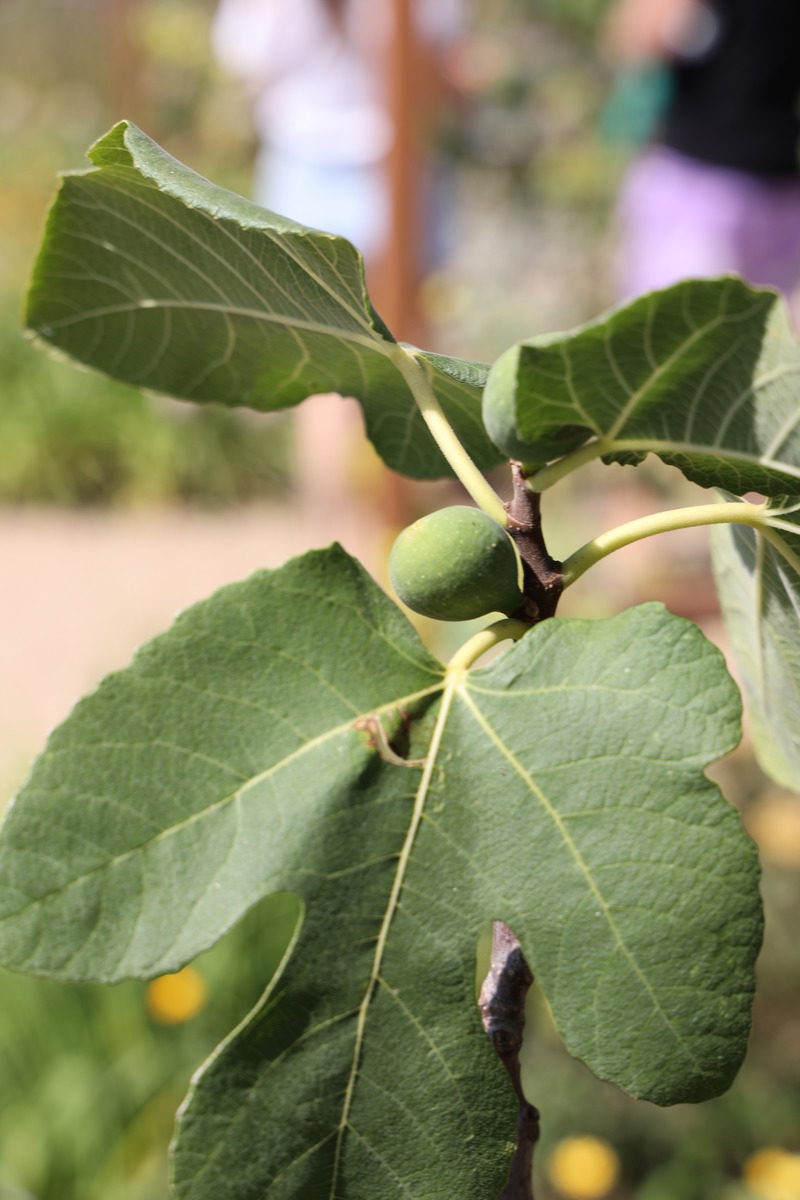
Picture: The dwarfism caused by the pot is clearly visible here. In this year's shoot growth, the fig tree only has 3-5 nodes, which follow each other very closely. Since it is important for the fig to survive, it immediately develops a few more fruits, the nourishment of which then further slows down vegetative growth.
Heavily pruned autumn fig varieties
The statement that heavy pruning reduces growth is of course banal. With most fruit trees, however, this strategy is not very successful: heavy pruning only leads to extremely strong growth again and is therefore usually not a successful strategy for keeping the stature of a fruit tree smaller in the long term. The autumn figs and the Twotimer® figs, however, have the unique characteristic that they are also able to form fruits on this year's wood in the same growing year as the fruit branch and to bring them to maturity. If one chooses a pruning and training method that forms an older branch structure with as many shoots as possible, from 50 cm to 150 cm high, and if one then consistently cuts back last year's shoots to 1-3 eyes every spring, one can beat the growth. At least as long as you keep up the hard pruning regime. In this way, the fig tree reaches a total height of 2-3 m, but never grows taller because it is pruned back every year. Nevertheless, with good autumn figs or even Twotimer® figs you can expect a strong autumn yield.

Picture: An autumn fig, pruned back to about 120 cm each year. At the top, the fruits develop anew every year; the fruits ripen and can be harvested in September to November.
The prerequisite for this type of cultivation, apart from suitable varieties such as Gustis® Perretta or Gustis® Morena, is a rather warm and long-lasting good autumn climate that allows as many autumn figs as possible to ripen. Further north or at higher altitudes this strategy will be less successful.
How to choose compact growing varieties from the Lubera range
We have presented the most compact growing varieties Ficcolino® and Little Miss Figgy® above and also explained the reasons for their compact growth. Otherwise, less growth is generally to be expected with well-branching, non-sparse growing Twotimer® varieties. However, the most reliable way to achieve weak growth in a pot is to leave a fig in it for a few years and not spoil it too much. Finally, for the open field, early ripening autumn fig varieties or Twotimer® varieties with a strong autumn yield can be used, which are pruned back to the basic structure every year.
